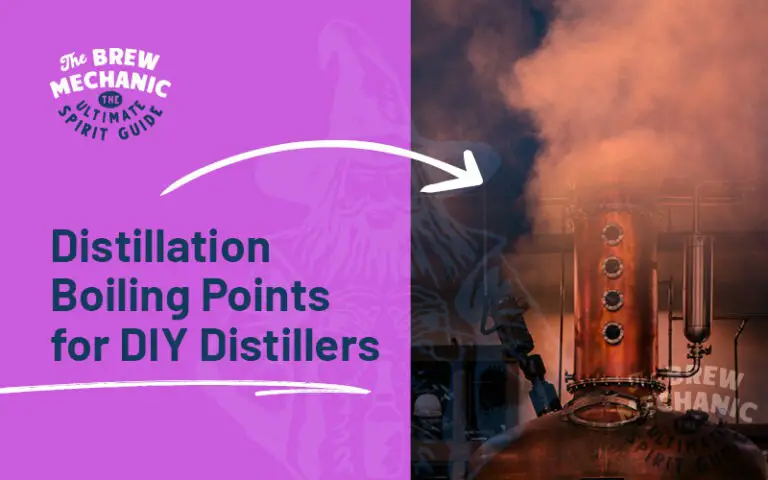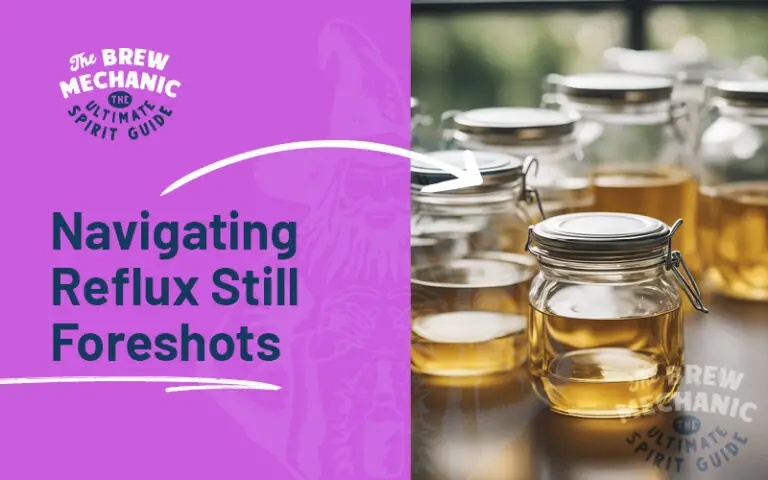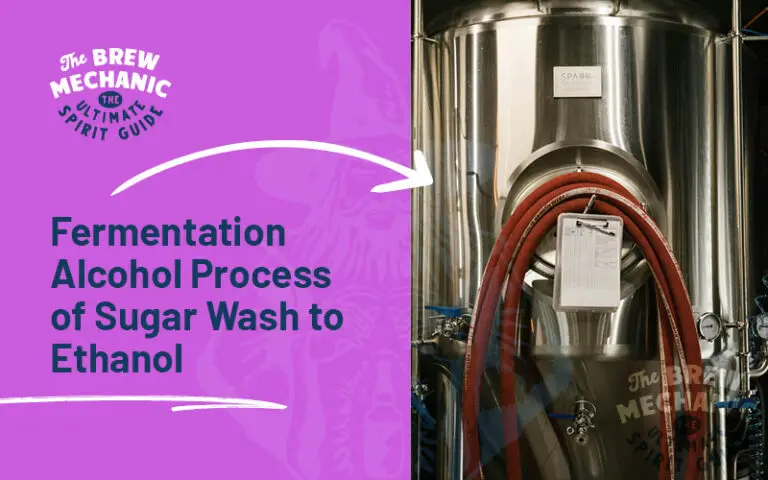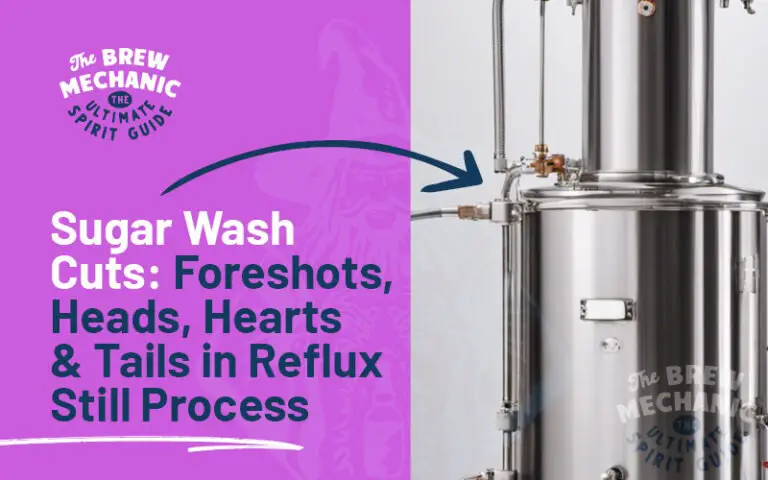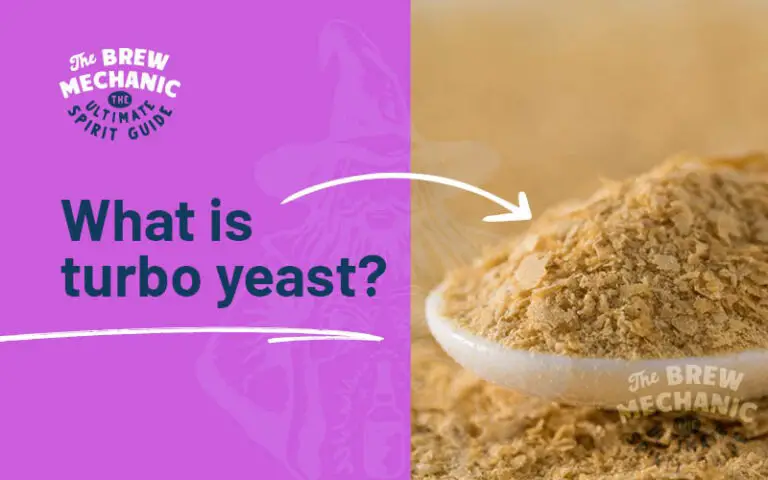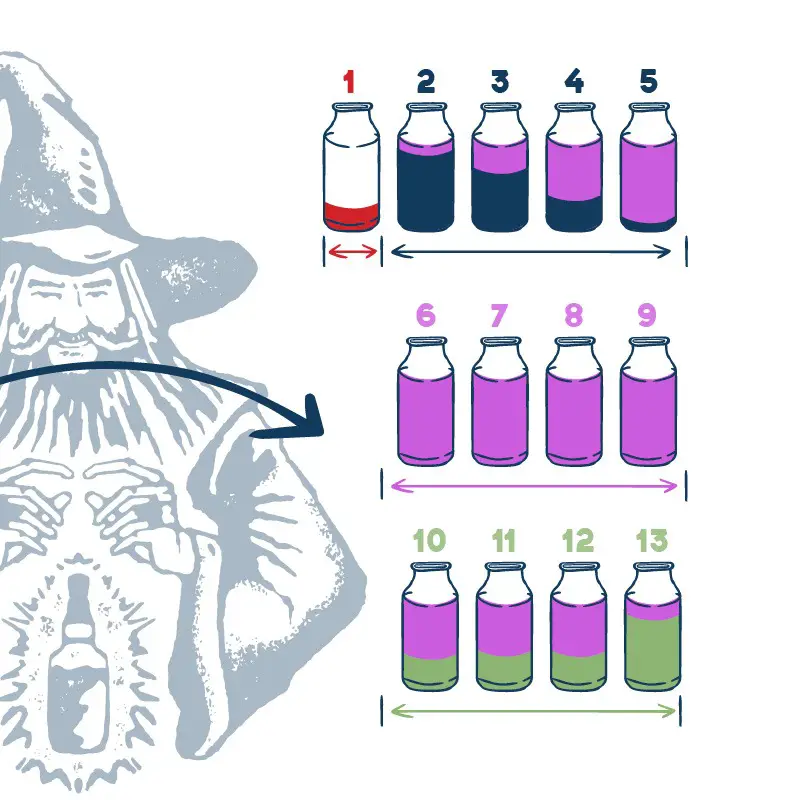Distilling Cuts Chart: A DIY home distilling Guide to Distilling Alcohol
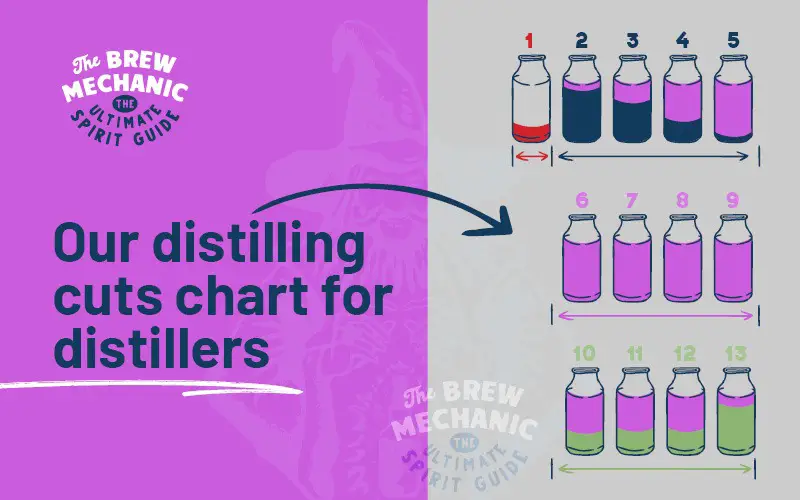
Disclaimer: This post might include affiliate links, through which I may earn a small commission without any extra cost to you. Additionally, I am an Amazon Associate and earn from eligible purchases. All the products and services I suggest are ones I have personally used or would use. Thank you very much for your support if you decide to buy through any of my links!
Come join the Distilling Squad!
Get the best fundamental tips & tricks here. Woohoo!
Using a distilling cuts chart is such a handy tool to have when making your alcohol cuts during a distillation run. For the new distiller knowing what these cuts are can be extremely important and daunting but don’t fear we have a simple guide to help you.
What is your still of choice to start collecting alcohol? Pot still or Reflux Still
Basically, there are two types of distilling processes and both each up with the same end result… ALCOHOL. So this is a process of converting a liquid fermented brew like sugar wash into a vapour phase rich in alcohol which is then condensed back to a liquid with a condenser. These are the following.
Pot Still
This involves a mash and then making alcohol distillate of 40 to 60% with plenty of flavour. This can be concentrated up to 70 to 80% by re-distilling it again but also losing some of its flavours. This type still is for making whisky, brandy type alcohol. This is what you associate moonshine with.
Reflux Still
Does multiple distillations in one pass through the packed column that makes a flavourless but high purity neutral alcohol up to 95%. This is for making vodka and making a wide range of alcohols by infusion and using flavoured essences.
Both processes involve the separation of foreshots, heads, hearts and tails by making cuts at the correct time by smell and taste. Making good cuts will result in a good finished product with a clean taste.
What are the Distilling Cuts?
The process of distilling alcohol involves the separation of the 4 stages being foreshots, heads, hearts and tails by switching to containers (smell and taste) collecting the distillate. This is then graded and left for the volatiles to evaporate. These cuts can be reworked back into the next batch or added to the hearts. The foreshots are dumped as they contain all the nasties.
Foreshots:
These initial 50-200 mL of the distillate, depending on the specific process, contain harmful compounds and off-flavors. Hence, we discard them to prioritize safety and ensure a pristine final product.
Heads:
Following the foreshots, the heads emerge, carrying some undesirable yet non-harmful compounds and off-flavors. While a select few may find their way into the final spirit, most are either discarded or reserved in a separate container for future redistillation.
Hearts:
Now we reach the heart of the distillation, the middle part of the run. Here lies the cleanest and most flavorsome distillate, with only a minimal presence of undesirable compounds. These hearts form the bulk of our final spirit, promising an exceptional drinking experience.
Tails:
As we approach the conclusion of distillation, the tails come forth, carrying subtle vegetal off-flavors. Typically, these tails are discarded. However, similar to the heads, they can be kept in a separate container for future re-distillation. If you choose to explore their potential further.
Why is it Important to make cuts?
During fermentation, many compounds are produced along with alcohol such as acetaldehyde, esters, and ethyl acetate. By taking cuts with a distilling cuts chart, we can minimize how many of the by-products make it into the final spirit. By removing all the low boiling point products 55 > 78°C (131>172.4°F) from the kettle and column in the first stage of distillation, will make your life easier when making cuts down the line.
Temperature ranges for stripping the wash
| Acetone | 56.6°C or 133.8°F |
| Methanol | 64°C or 147.2°F |
| Ethyl Acetate | 77.1°C or 170.8°F |
| Ethanol Range | 78.3 > 81.5°C or 172.9 > 178.7°F |
| 2 Proponal | 82°C or 179.6°F |
| 1 Proponal | 97°C or 206.6°F |
| Fuesel oils | 94 > 95°C or 201.2 > 203°F |
To avoid any mistakes run the still with no top reflux stage control. The top temperature is controlled at 78 > 79°C (172.4>174.2°F) until there are no volatile vapors coming over and being condensed. This temperature control is done in the kettle with either gas or electrical elements.
What this means is that all boiling ranges from 55 > 78°C (131>172.4°F) Celsius are no more in the column and kettle.
What are the main cuts that occur during the distillation of Alcohol?
When you’re distilling your run, or distilling cuts chart guide will help you keep on track and most importantly be safe. Now let’s get to the meat of this article learn how the guide for cuts will actually get you on the right path.
Download our Distilling Cuts Chart here
Yes I want this epic PDF plus get tips and tricks! You will be joining our distilling mail list. 🙂

FORESHOTS 10% of distillate > JAR 1
The initial portion, known as foreshots, should ideally constitute around 10% of your total distillation volume. Opting for a slightly delayed separation is advisable, as it ensures the exclusion of all undesirable components.
Take note that the foreshots will commence boiling at temperatures exceeding 50 degrees. We collect the foreshots into your collection jars. Depending on the mash or wash used the foreshots contain methanol.
| Acetone | 56.6°C or 133.8°F |
| Methanol | 64°C or 147.2°F |
| Ethyl Acetate | 77.1°C or 170.8°F |
THE HEADS 20 – 30% > JAR 2
The heads should total 20 – 30% of the final amount of your run. Run temp to 76.5°C (169.7°F) keep there for ten minutes if no more distillate all foreshots and heads are over. Go by smell and taste. If double distil with sodium carbonate added, the volume of heads, foreshots and tails will change. Go by smell & taste. Small jars you can separate and work back into Hearts. Again taste and smell.
| Acetone | 56.6°C or 133.8°F |
| Methanol | 64°C or 147.2°F |
| Ethyl Acetate | 77.1°C or 170.8°F |
HEARTS 20 to 30% > JAR 3 >
The seasoned experts and industry professionals concur that the sweet spot lies within a specific temperature range, typically between 78 > 82°C (172.4>179.6°F). Of course, the exact range may vary depending on the type of still being used.
This crucial segment, known as the “hearts,” usually accounts for approximately 30% of the overall alcohol yield. To maintain the utmost purity, it is advisable to make this cut early in the distillation process. Remember, it’s far preferable to blend a portion of the hearts into the tails rather than allowing any trace of tails to infiltrate the precious hearts.
| Acetone | 56.6°C or 133.8°F |
| Methanol | 64°C or 147.2°F |
| Ethyl Acetate | 77.1°C or 170.8°F |
| Ethanol Range | 78.3 > 81.5°C or 172.9 > 178.7°F |
TAILS 20 – 30% of run
After the run reaches about 82°C (179.6°F), your choice is to keep the still running, watching the ABV as it drops there may be some vaporised steam that makes its way into your distillate, hence the drop in ABV.
There may also be other chemicals that burn at a higher temperature than ethanol, which can give this portion of the distillate a flavour that isn’t quite right. Coming into “tails” and can total as much as 20-30% of your run. With the tails, they can be placed aside to be further distilled later. This is something you have to learn yourself as to how to make the cut back into the second run.
| 2 Proponal | 82°C or 179.6°F |
| 1 Proponal | 97°C or 206.6°F |
| Fuesel oils | 94 > 95°C or 201.2 > 203°F |
What to do with the tails after distilling in Jars?
The liquid that is obtained at this stage is referred to as “tails”, which contains lesser quantities of alcohol. This portion of the liquid is characterized by unpleasant aromas and flavors caused by the presence of fusel alcohols (which have a higher boiling point) in the still.
Similar to the heads and tails will either be discarded or undergo another distillation process to extract more alcohol.
Why a distilling cuts chart will help you as a distiller?
As a novice distiller, when you have a distilling cuts chart, it guides you through the different points in a distillation run. You should always know the temp of your still to ensure accuracy. In order to make good cuts you must know your equipment and focus on the cuts temperature points. We want our alcohol content to be the best as we want to drink it in the end. I wish you the best of luck.
Last Updated on Mar 11, 2024 by The Brew Mechanic
Disclosure: I may receive affiliate compensation for some of the links below at no cost to you if you decide to purchase a product or service. You can read our affiliate disclosure in our privacy policy. The information provided is for entertainment only.

With 35 years of knowledge of being a chemical engineer in alcohol manufacturing plants, my mission is to teach the next generation of home distilling alcohol brewers at a supernatural speed.
My reviews are based on real-life experiences with reflux stills, sugar wash, troubleshooting and mystical chemical reactions.
Download of Distilling Cuts Chart here
Yes I want this epic PDF plus get tips and tricks! You will be joining our brew journey mail list. 🙂

